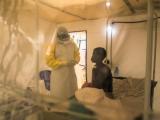Jun 25, 2010
Study: Clusters of human H5N1 viruses have southern China source
In a study designed to track the geographic source of human H5N1 avian influenza infections, a research group from China and the United States has found evidence suggesting southern China as the origin of multiple clusters of the viruses. Their findings appeared yesterday in the Journal of Infectious Diseases (JID). They used hemagglutinin gene sequences from 215 human H5N1 viruses to determine the source and dispersal pattern. They found that the viruses can be divided among four geographic clusters: southern China, Indonesia, Indo-China, and middle Asia–north Africa. Analysis of N-glycosylation sites at positions 100 and 170 found three different types of human H5N1 viruses. Combining the genetic analysis with geographic information system analysis suggested southern China as a common source. The group proposed that the virus spread into Southeast Asia and western and northern China, and then made a final spread across Eurasia and into the Middle East and Africa. They also proposed that the initial spread from Southern China into India was followed by transmission into Indonesia.
Jun 24 JID abstract
Newest Ebola species kills a third of those it infects
A case-series investigation of Ugandan patients infected with a new Ebola Bundibugyo species identified in 2007 and 2008 suggests that the illnesses are less deadly than those involving other Ebola viruses. Researchers, reporting in Emerging Infectious Diseases (EID), also found that most transmission was linked to handling dead people in funeral rituals without adequate protection. The novel Ebola virus was found in an outbreak that struck western Uganda in 2007. Four Ebola subtypes had previously been identified—Zaire, Sudan, Cote d'Ivoire, and Reston—but only the Zaire and Sudan subtypes have been associated with large hemorrhagic fever outbreaks in people in Africa. In the current study, researchers identified 192 suspected cases, of which 22% (42) were lab confirmed and 74 (38%) were probable. The case-fatality rate (CFR) for confirmed infections was 33%. According to previous reports, the CFR for other types of Ebola infections can range from 50% to 90%. Most case-patients were crop farmers, and 12% (14) were healthcare workers. The researchers suggested that the 1-week incubation period may be shorter in Ebola Bundibugyo than for other types of Ebola infections and that the bleeding symptom is less prominent. They concluded that health officials maintain a high index of suspicion for Ebola and other hemorrhagic viruses when clusters of patients emerge who have sudden onset of fever, fatigue, and abdominal symptoms, and they advocate for ambulance and burial teams.
Jul EID study
Emergent completes anthrax vaccine deliveries to several countries
Emergent Biosolutions, based in Rockville, Md., announced yesterday that it has completed deliveries of BioThrax, its anthrax vaccine adsorbed countermeasure, to several allied nations. Emergent makes the only US-licensed vaccine against anthrax infection. The company said the recent sales and deliveries, which affect its second quarter earnings, are worth $2.3 million. The US government has received more than 42 million doses of BioThrax from Emergent since 1998, and 9.5 million doses have been used to immunize 2.4 million military personnel.
Jun 24 Emergent Biosolutions press release


















